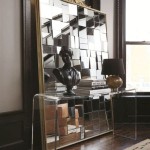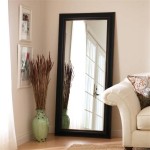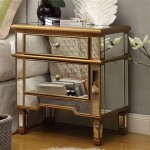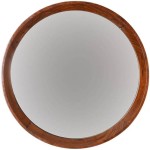Fog Free Mirrors: A Clear View, Every Time
Fogged mirrors are a common annoyance, especially after a hot shower. The fog forms due to condensation, the process by which water vapor in the air transforms into liquid water when it contacts a cooler surface. In the bathroom, the mirror's surface is cooler than the surrounding air saturated with water vapor from the shower, causing the vapor to condense on the mirror as tiny water droplets, obstructing the reflection.
Several methods exist to prevent or eliminate this fogging, ranging from simple DIY solutions to more advanced technological integrations. Understanding these methods requires a basic understanding of the underlying principles of condensation and heat transfer.
One common approach involves heating the mirror surface to prevent the water vapor from condensing. This can be achieved through various means. Electrically heated mirror pads adhere to the back of the mirror and gently warm the glass, keeping its temperature above the dew point, the temperature at which condensation occurs. Some mirrors incorporate integrated heating elements within their structure, offering a more seamless solution.
Another effective method utilizes specialized coatings applied to the mirror surface. These hydrophilic coatings attract water molecules, causing the condensed water to spread evenly across the mirror in a thin, transparent film rather than forming individual droplets that scatter light and create fog. This thin film allows light to pass through, maintaining a clear reflection even with condensation present.
Ventilation is a crucial factor in controlling humidity levels and preventing mirror fogging. Proper bathroom ventilation systems, such as exhaust fans, help remove the moisture-laden air, reducing the amount of water vapor available to condense on the mirror. Opening a window can also assist in air circulation and humidity reduction, though this might not be practical in all climates or bathroom configurations.
Some DIY solutions offer temporary fog-free results. Applying a thin layer of shaving cream or soap to the mirror and then wiping it clean can leave a residue that temporarily inhibits fog formation. This works by creating a barrier that discourages water droplets from adhering to the glass surface. However, this method requires regular reapplication and might not be as effective as other solutions.
Choosing the appropriate fog-free solution depends on various factors, including budget, bathroom design, and desired level of convenience. Heated mirrors offer a reliable and long-term solution, eliminating fogging entirely. While they require electrical wiring during installation or replacement, they provide a consistently clear reflection regardless of humidity levels.
Mirrors with hydrophilic coatings provide a more affordable option compared to heated mirrors. They require no electricity and are generally easy to install or replace. However, their effectiveness might diminish over time, and the coating may require reapplication or replacement in the future.
Improving bathroom ventilation is a fundamental step in addressing mirror fogging and other moisture-related issues. While this might involve more extensive renovations, it offers long-term benefits beyond just a fog-free mirror, contributing to a healthier and more comfortable bathroom environment.
The technology behind fog-free mirrors is constantly evolving. New materials and coatings are being developed to improve the efficiency and longevity of these solutions. Some manufacturers are exploring innovative approaches, such as incorporating anti-fogging technology directly into the glass manufacturing process, eliminating the need for additional coatings or heating elements.
When selecting a fog-free mirror, consider the specific needs and characteristics of the bathroom. Factors such as the size of the bathroom, the frequency of shower use, and the existing ventilation system should influence the choice of the most suitable solution. Properly implemented, a fog-free mirror can significantly enhance the functionality and comfort of the bathroom experience.
Maintaining a fog-free mirror also involves regular cleaning. Regardless of the chosen method, cleaning the mirror surface with appropriate glass cleaners helps remove any residue or buildup that might interfere with the anti-fogging properties. Following manufacturer recommendations for cleaning and maintenance ensures optimal performance and longevity.
From simple DIY remedies to advanced integrated technologies, the options for achieving a fog-free mirror are numerous. By understanding the principles of condensation and the various available solutions, homeowners can choose the most appropriate method to eliminate this common bathroom nuisance and enjoy a clear reflection every time.

Aqua Fog Free Mirror Electric Lighting Company

Acclaim Fog Free Mirror Electric Lighting Company

Acclaim Fog Free Mirror Electric Lighting Company

Aqua Fog Free Mirror Electric Lighting Company

Aqua Fog Free Mirror Electric Lighting Company

Acclaim Fog Free Mirror Electric Lighting Company

Fog Free Shower Mirror Anti Manufacturer

Fog Free Bathroom Mirrors At Com

Popular Design Rectangular Fog Free Led Lighting Smart Bathroom Mirror With Touch Sensor Switch China Bath Made In Com

Aqua Fog Free Shower Mirror Bradford Hardware








